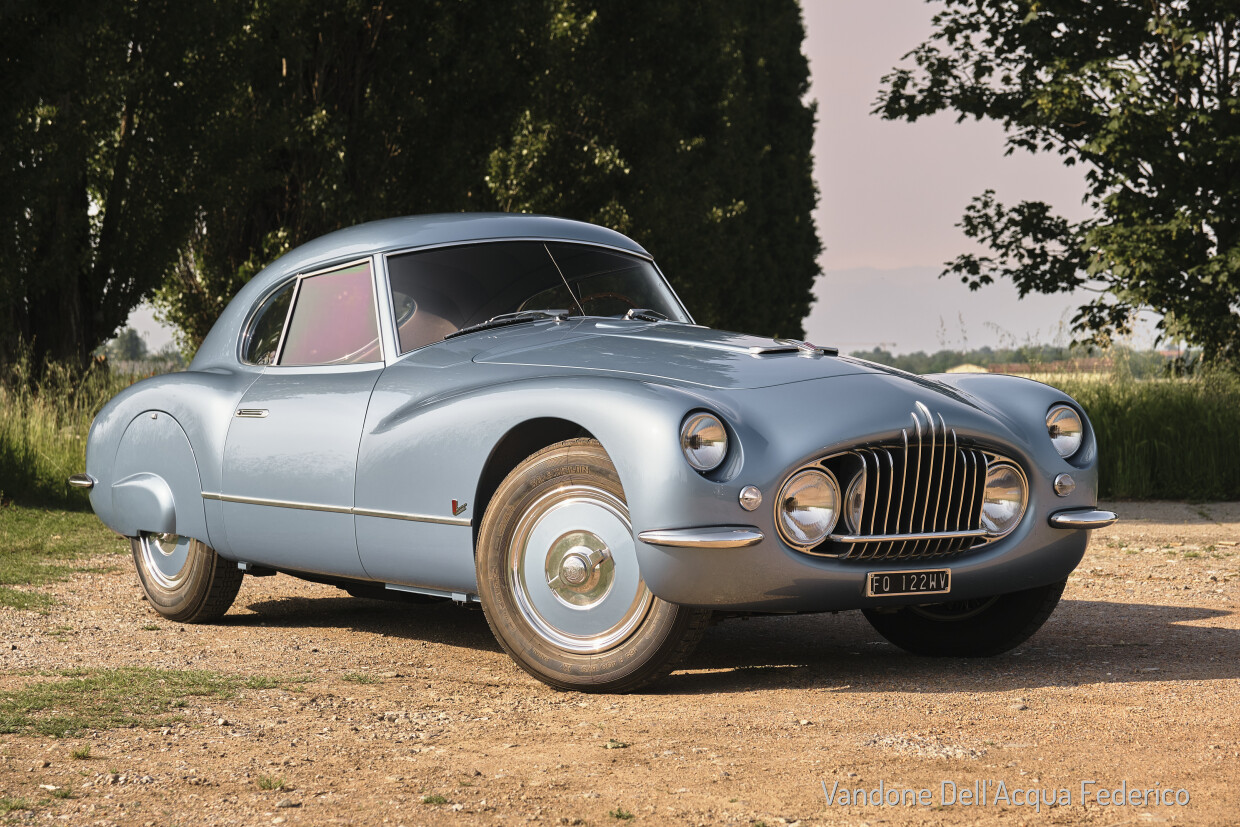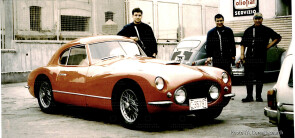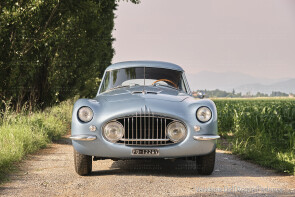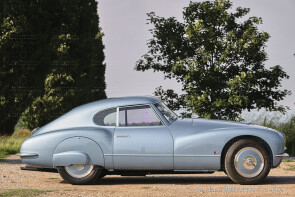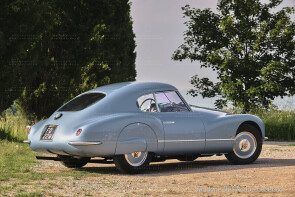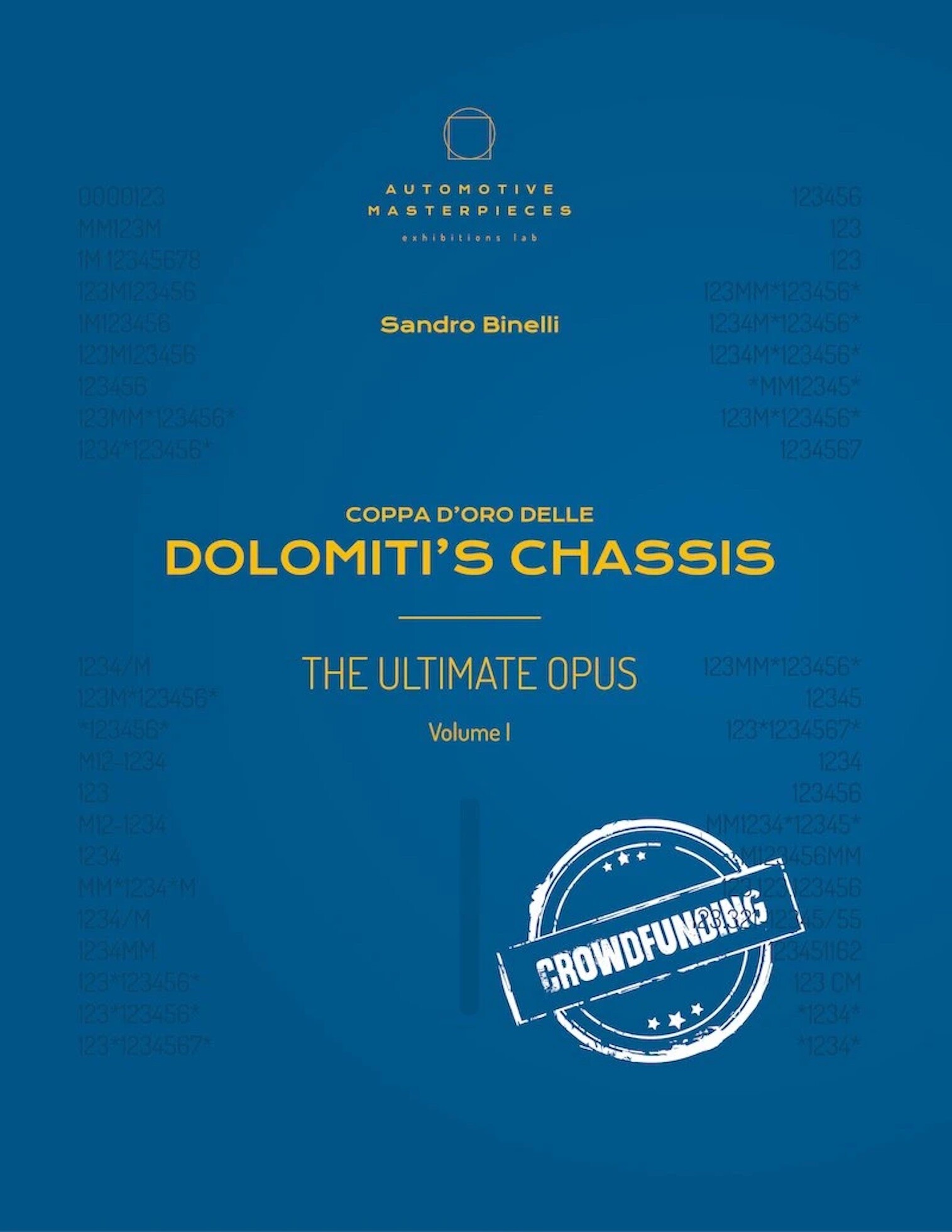
1952 Fiat 8V
ON/OFF
Why am I an Automotive Masterpiece?
L. Limited edition cars
no. 34 manufactured, 15th built
In the postwar period, Fiat was working on an eight-cylinder engine internally known as Tipo 106. The engine was originally designed by Dante Giacosa for a luxury sedan, but that project was stopped. Rudolf Hruska, at the time working at the S.I.A.T.A., was given the task to design a car around the V8 engine. The development took place in absolute secrecy. As not to stress the experimental department of Fiat, production of the chassis was also taken up by S.I.A.T.A. Styled by chief designer Fabio Luigi Rapi, the Fiat 8V or “Otto Vù” was presented to the Italian press in February 1952 and first exhibited the following March at the Geneva Motor Show. The car shapes saw several changes in time: the prototype used an art deco grill extending into the hood which initially characterized the examples of the first series. A second series was made featuring four headlights with some of the later cars having a full-width windscreen. A high-performance coupé, destined to compete in the GT class: the 2-liter 8V model was a departure from the usual Fiat production. It was really welcomed by Italian private drivers, it inspired the tuners and it was, in a word, the car to beat in the 2-liter class, also thanks to the special versions built by Zagato or Siata. The Fiat V8 had a 70° V configuration of 1996 cc of displacement, at 5600 rpm the engine produced 105 hp in standard form with double two-barrel Weber 36 DCS carburetors, giving a top speed of 190 km/h. Some engines were fitted with two huge four-throat Weber 36 IF4/C carburetors offering 120 hp, but the intake manifold was very rare. The Fiat 8V is the only eight-cylinder built by Fiat. The engine was connected to a four speed gearbox. The car had independent suspension all round reworking the Fiat 1100 ones and drum brakes on four wheels. As the body was welded to the chassis it was a semi-unitary construction. Only 114 of these high-performance coupés had been produced, 64 of them with a “Fiat Carrozzerie Speciali” body, 34 first series and 30 second series. It was made available anyway in different body styles, offered by the factory and by various coachbuilders like Zagato, Pinin Farina, Ghia and Vignale. The production ceased in 1954.
The Fiat 8V with chassis no. 106*000015* was an example bodied by Carrozzerie Speciali Fiat designed by Fabio Luigi Rapi. 26 of 34 first-series cars retained the original shapes designed by Luigi Fabio Rapi and were not re-bodied or modified. Of these 26, there is specific news of only 7 cars surviving to date, 3 were destroyed, and one was dismantled. There is no news about the remaining 15. According to the authoritative Tony Adriaensen, this chassis was the first car of the series I that left Torino. The date (indicated by the Centro Storico Fiat) is that of sale of the car (export date) and not of construction. Certainly, the chassis were built progressively, and it is presumable that the Carrozzerie Speciali Fiat department bodied many cars at the same time, while sales went in no particular order. For a long time, it was believed that 106*000008* was the oldest chassis number among the survivors with Fiat bodywork and, for this reason, the monographic book dedicated to this car was published in June 2022 with the title "The Earliest Surviving Rapi's Fiat 8v". More recently Tony Adriaensen announced that he had identified, as the oldest chassis number, the surviving 106*000003* still with Fiat bodywork. In summary, chassis 106*000015* appears to have been the fourth to leave the Fiat factories but the first to be sold still surviving with Fiat bodywork. It was shipped to Bari at the end of August 1952, to be exhibited by the parent company in the then famous “Fiera del Levante”, the most important exhibition fair between southern Europe and Mediterranean area, held that year between September 6 and 24. The car went to a Fiat dealer in Lucca and sold to its first owner in 1954. The car participated at the IX Coppa d’Oro delle Dolomiti in 1955 with its second owner, Arrigo Cavallacci, ranking 37th overall. At the end of 1950s the car was bought by American engineer J. Howard, working for Chrysler Corp., and travelling around the world. He found the car for sale in a dealership in Bari and took it across the ocean. Due to an engine failure, the original unit was swapped around 1962 for the engine no. 000039, coming out of a famous sister 8V: the Ghia’s Supersonic, chassis no. 106*000041*. The Supersonic's owner had also experienced problems with engine no. 000039, probably because it was still one of the first examples and, perhaps, for incorrect use. The fact is that he received a guaranteed engine, replacing the problematic unit which, instead of returning to the parent company, ended up, overhauled, on chassis no. 106*000015*. The car lives in US from 1959 to 2007 when, restored in its original grey-blue metallic, comes back in Europe to be at the most important events around. One of its last owners was the late Jean Sage, sporting director at the French Formula One team Renault between 1977 and 1985.
